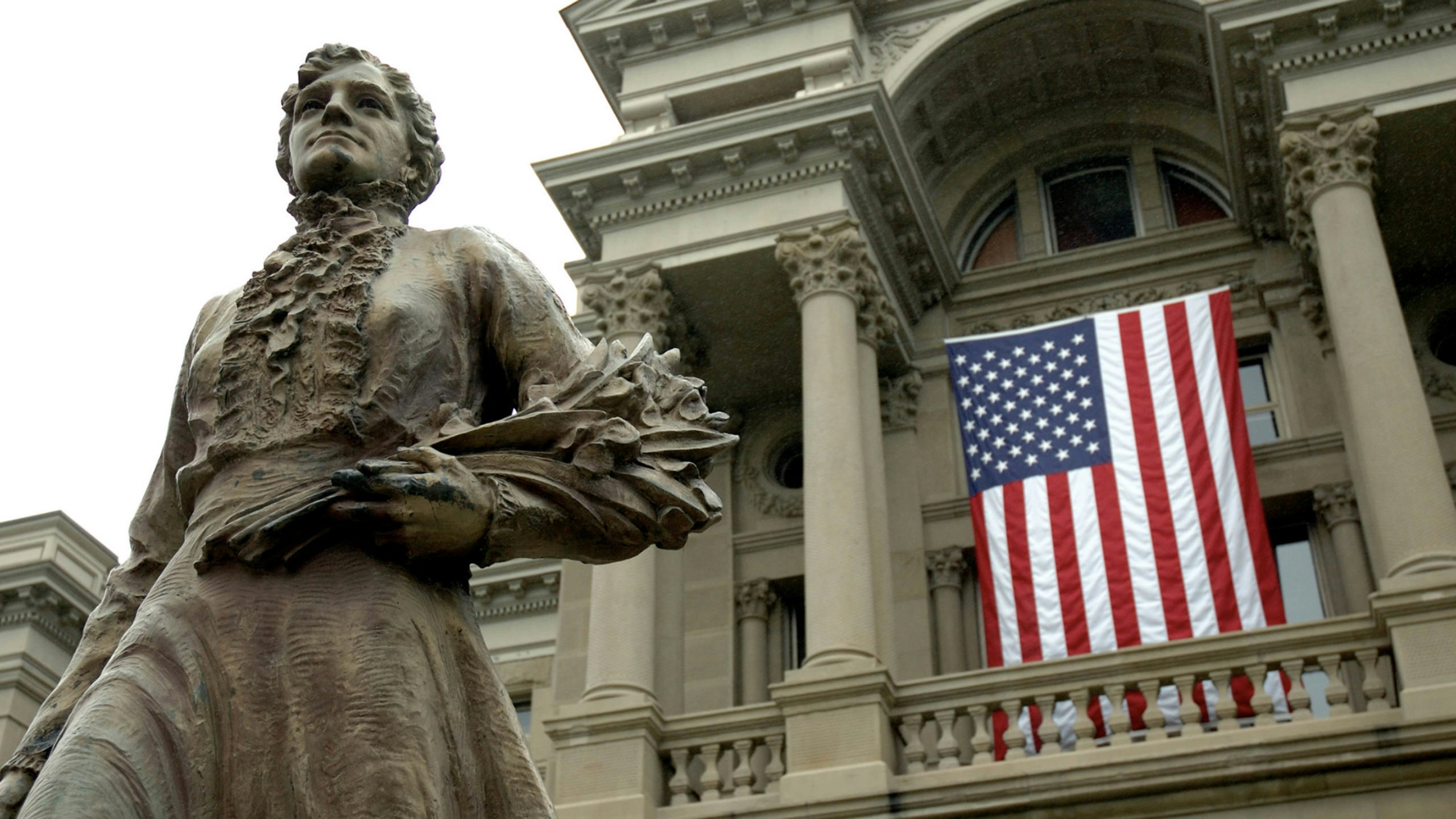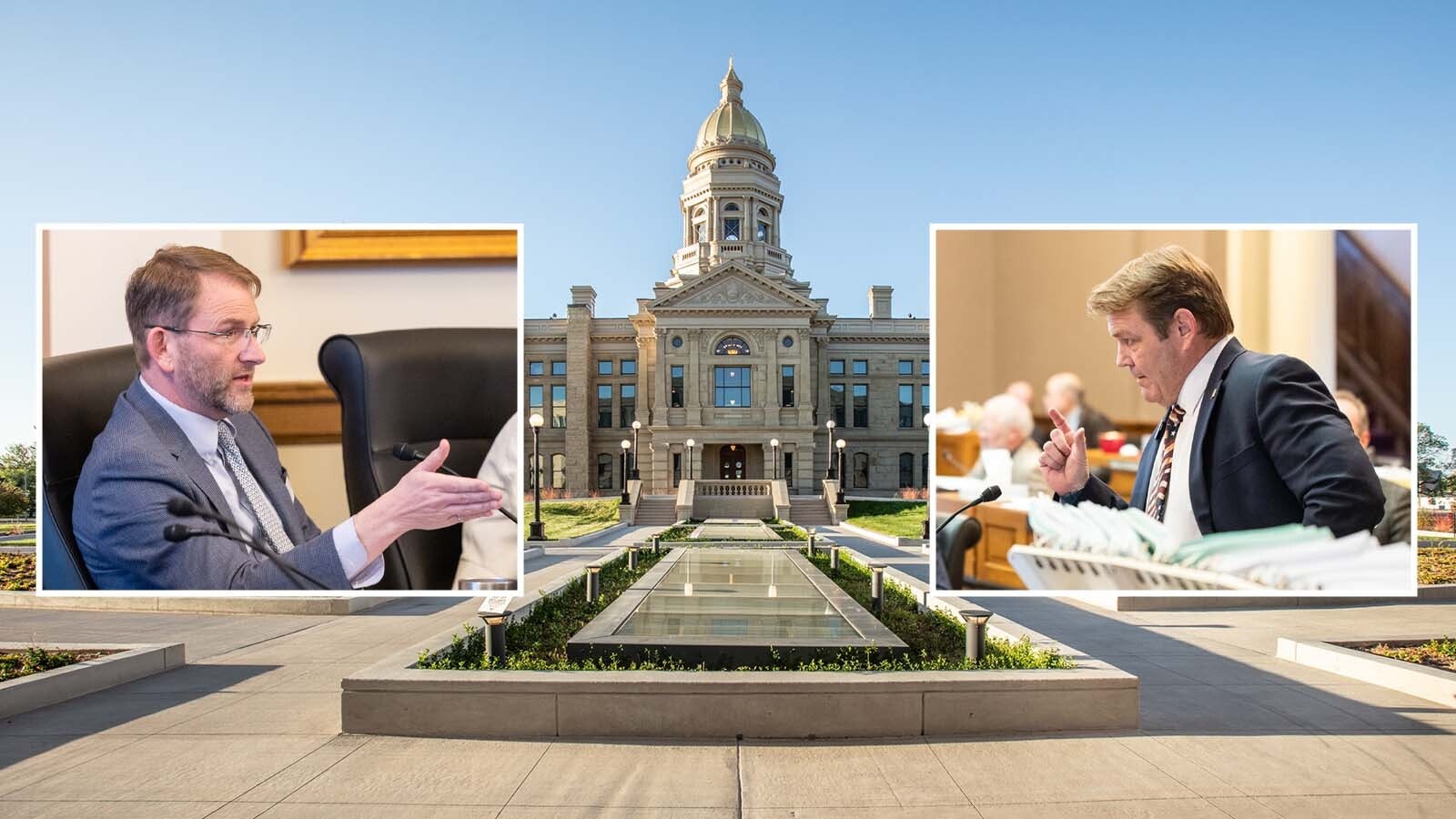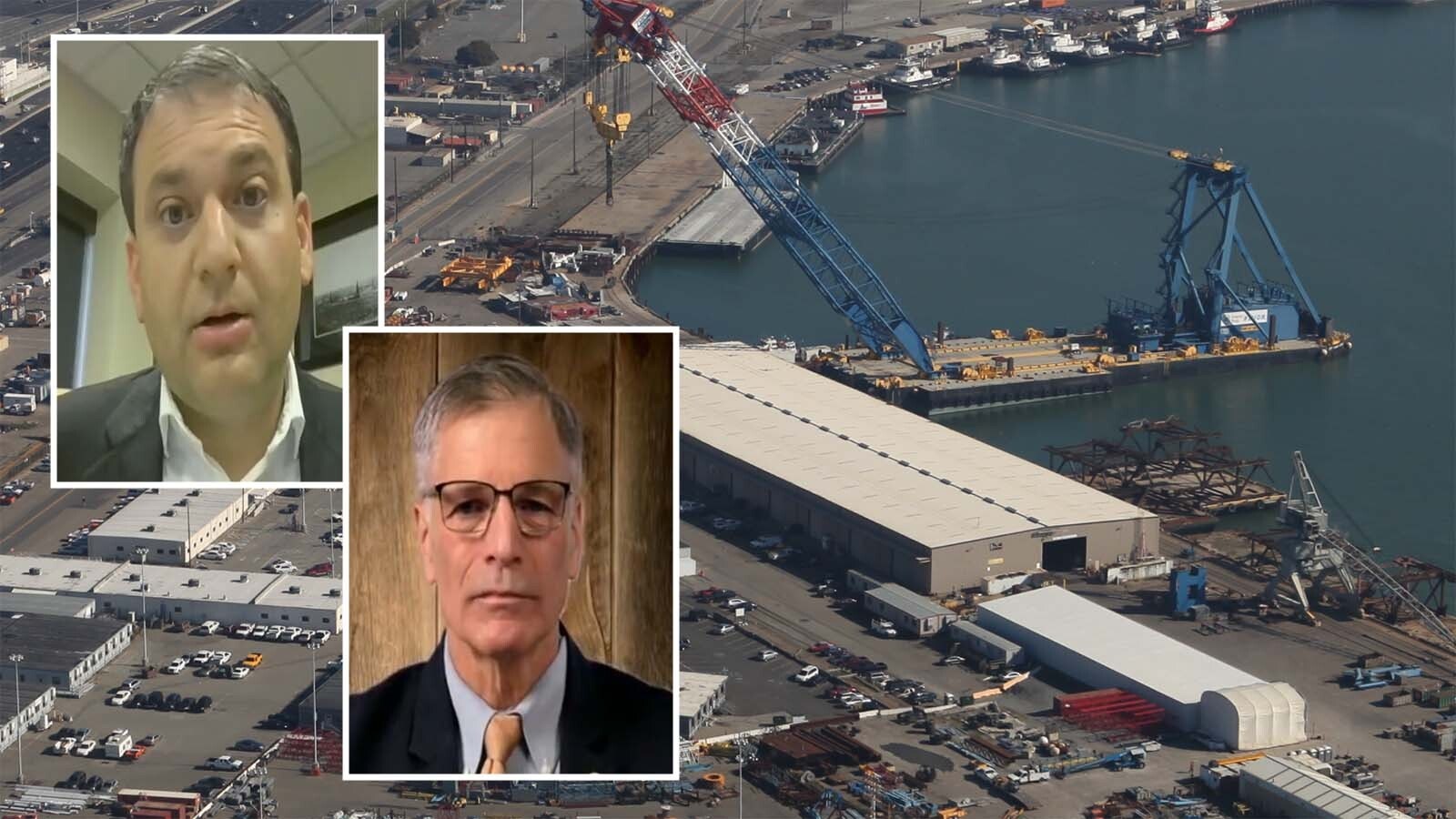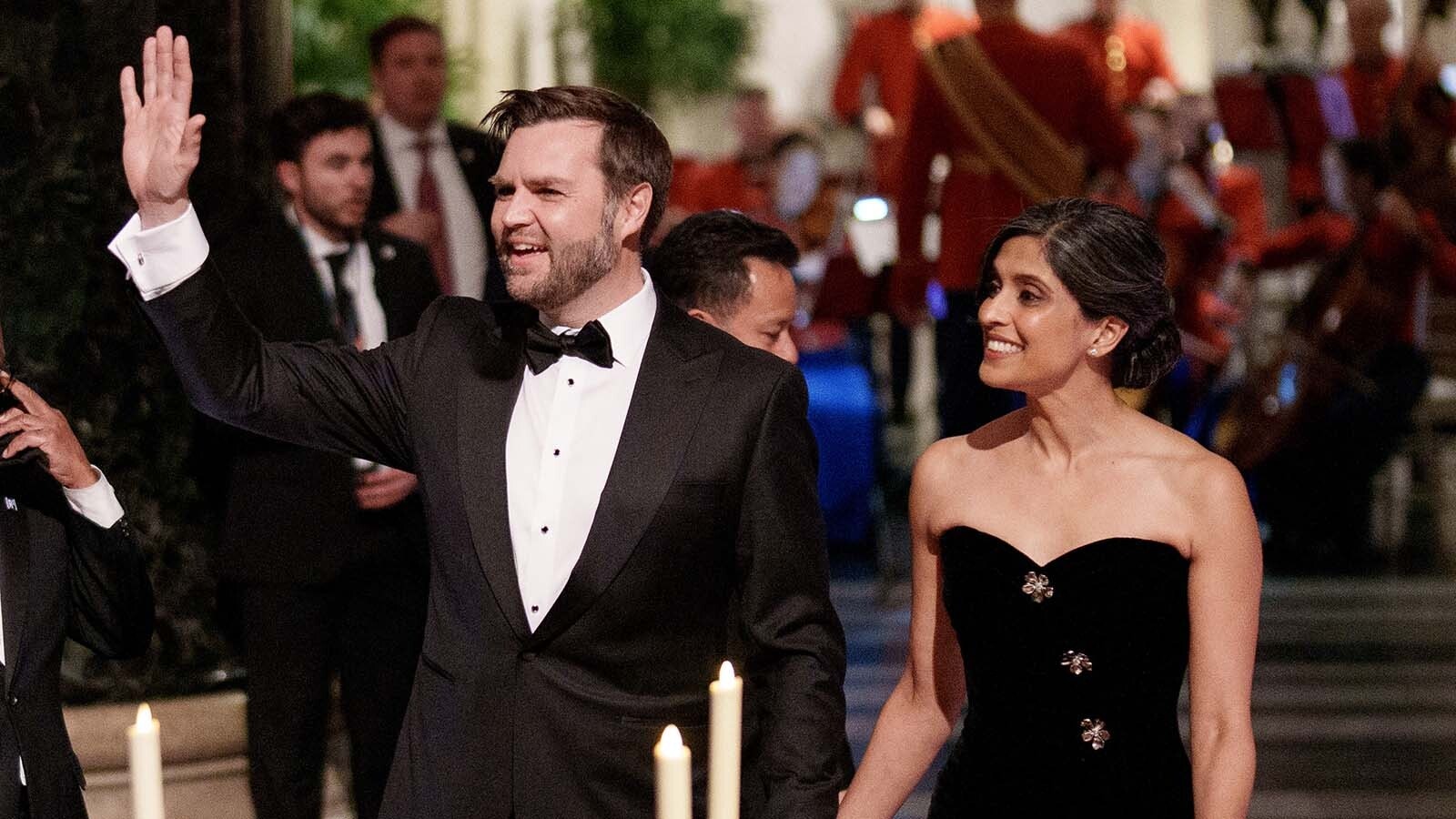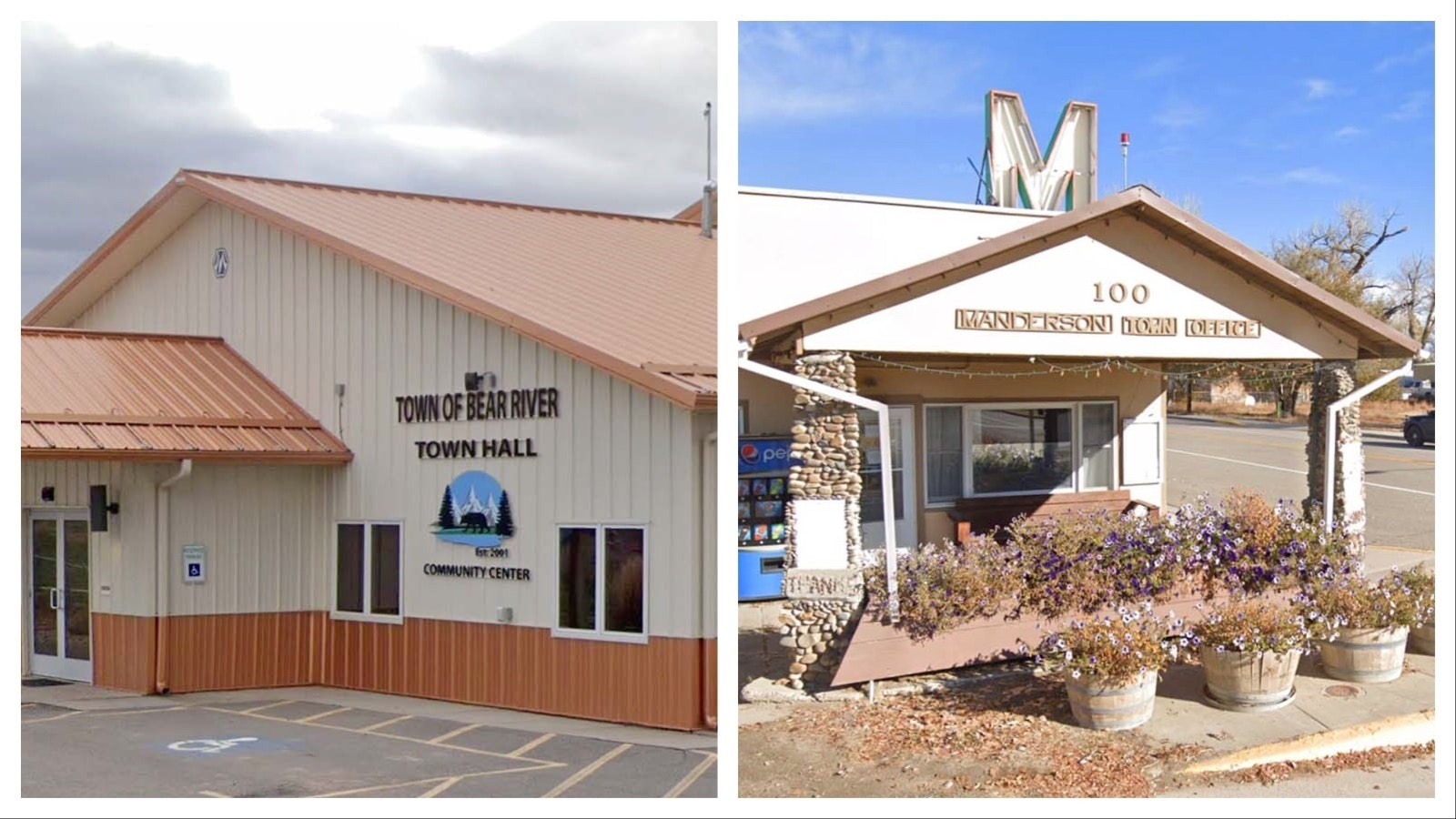A statue honoring the nation’s first female justice of the peace, Wyoming’s Esther Hobart Morris, has had a rough life since first unveiled outside the state Capitol in Cheyenne in 1963.
Despite being a target for vandals and pranksters, some say the statue served a valuable and commanding presence outside the Capitol steps and should be returned, despite risks the statue could be damaged as it has been in the past.
“I think the Capitol needs a human spirit out there,” said Cheyenne resident Peg Ostlund. “We don’t need to commission a new statue. We’ve already got it.”
Sculptures honoring Hobart Morris and Chief Washakie that had been fixtures outside the Capitol now hold court inside at the end of the Capitol Extension hallway in the basement of the building.

Wear And Tear
In 1973, the Hobart Morris statue was struck by a car, said Wyoming State Museum Director Kevin Ramler, knocking it off its pedestal and to the ground. She was hit by a car again in 1993, but that time Hobart Morris stood firm.
Ramler also said there have been issues with decay to the statue’s surfacing when exposed to the harsh elements of the Wyoming climate for years on end.
The Hobart Morris statue was recently taken to Colorado for restoration and new bronze surfacing. A close-up inspection, Ramler said, showed how damage had affected the figure over the years.
“It’s not good for the statues to be outside from a conservation perspective,” he said. “It looked like it had been living outside for 60 years.”
The Wyoming State Museum has recommended the statues be moved inside in the interests of preservation.
The statues were initially moved inside during a $300 million Capitol renovation project that began about five years ago, but they were never moved back outside when the work was completed in 2019.
In late 2022, the State Building Commission, acting on a recommendation from the Capitol Interpretive Exhibits and Wayfinding Subcommittee, voted to keep Hobart Morris and Chief Washakie in the Capitol Extension hallway, which is to become a gallery and interpretive center in the future.
A similar vote also was taken in 2019 by the Capitol Oversight Committee.
Senate President Ogden Driskill, R-Devils Tower, said he wants the Hobart Morris statue moved outside, mentioning how bronze surfacing is typically made to endure the natural elements. He said he's even considered bringing legislation on the matter.
“I’ve wanted it outside since we moved it in,” Driskill said. “It makes a statement for Wyoming."
Reasons To Move Inside
Kristi Racines, state auditor and co-chair of the Capitol Interpretive Exhibits and Wayfinding Subcommittee, said she supports keeping Esther Morris inside for the sake of preserving the sculpture, despite previously wanting the statue to remain outdoors around the time of the Capitol renovation.
She also added that “nothing is written in stone” when it comes to the permanence of the decision.
At the subcommittee’s 2019 meeting, Ostlund said arguments were made that the original designers of the Capitol didn’t want anything to obstruct the view of the building.
“We were gobsmacked by the reasoning of legislative leaders Tony Ross and Phil Nicholas as to why EHM (Esther Hobart Morris) had been removed from the front of the Capitol,” Ostlund wrote in her 2019 letter to Gov. Mark Gordon. “Had I not been so shy, I would have told them how ridiculous their reasoning was.”
Ostlund has been one of the most outspoken opponents of bringing the sculptures inside permanently. Although there is a smaller statue dedicated to Hobart Morris outside the Wyoming Supreme Court, she said the size of this monument is an insult to her legacy.
Concern over vandalism is another reason given about keeping the statues inside in the Capitol basement.
On Tuesday, the Capitol Interpretive Exhibits and Wayfinding Subcommittee discussed interpretive signage and kiosks that will be located throughout the Capitol Complex, including outside.
Cheyenne resident and lobbyist Richard Garrett said he finds it a little odd that there isn’t as much concern about those items being vandalized as there is for the sculptures.
“Those are just vandalism magnets,” he said.

It’s Wyoming History
Ostlund is a passionate believer in the importance of educating people about Hobart Morris’ role in shaping Wyoming history.
In 1955, an official Esther Morris Memorial commission was created to help raise money to place a statue honoring her in Statuary Hall in Washington, D.C. The campaign received donations from school children, barbershops and everyday people from across Wyoming.
“There were people who gave pennies and dimes,” Ostlund said.
In 1960, in Washington, D.C., the official presentation happened in the U.S. Capitol building, attended by then-Vice President Richard Nixon.
In 1961, the state Legislature allocated $7,500 for a replica of the sculpture to be placed in front of the Wyoming Capitol building.
Hobart Morris was a leader in Wyoming’s suffrage movement, which eventually led to the Cowboy State becoming the first in the union to grant women the right to vote.
Former Superintendent of Public Instruction and Secretary of State Diana Ohman told Cowboy State Daily that Hobart Morris represents the spirit of Wyoming and one of the state’s most significant accomplishments in granting women’s suffrage.
She found the statue to be one of the most recognizable features from the Capitol, similar to the structure's gold dome.
“Frankly, they’ve desecrated her by sending her to the basement,” Ohman said. “She should be returned outside to inspire and encourage those that see her. She represents what this state is all about.”
Ostlund sent an extensive presentation to Gordon in June 2022 about the need to move the Hobart Morris statue back outside. She received no response, which she said she found disappointing.
Shortcomings
Ostlund’s mother Mary Ostlund, who died in 2021, also was passionate about the cause of moving Hobart Morris back outside.
Ostlund said her mother also felt putting Chief Washakie in the basement “diminished his sculptural splendor.”
Washakie was a famous Native American who lived for about 100 years during the 19th century. He was a warrior, peace negotiator, friend of Brigham Young and leader of the Eastern Shoshone Tribe.
The sculpture honoring him was first unveiled inside the Capitol in 2001, but according to a Billings Gazette story at the time, there were plans to move it outside. It is unknown when that was supposed to happen.
A large sculpture depicting Washakie on horseback at the University of Wyoming also has an uncertain future as the university is replacing a dining center the statue stands in front of.
One of the flaws with the current placement of the Washakie and Hobart Morris statues in the Capitol building is that Hobart Morris somewhat towers over Washakie, the former made about 1.25 times larger than her real stature. The Washakie statue by comparison seems a somewhat diminutive presence.
Racines said there are plans to separate the sculptures and move them along the sides of the extension hallway where they will likely be seen by more people.
But aside from the eight- to 12-week annual legislative sessions, the Capitol is a relatively quiet place with a modest number of visitors compared to the volume of people passing outside the building.
Where Else?
Ostlund said she would like to see the Washakie sculpture moved to the front atrium of the Wyoming State Museum and returned to a pedestal, which it once stood on.
Garrett said he would like to see the statues stay inside but moved up to the Capitol Rotunda. He finds their current placement in the basement a “compromise.”
“This just feels like a compromise that has left both diminished,” she said. “I really do think their place is in the Rotunda.”
Ostlund said she has fond memories of her young son running by the Hobart Morris statue and up the front steps of the Capitol to see former Secretary of State Diana Ohman.
“I allowed it, because I wanted him to learn to not be afraid of walking into an imposing place full of powerful people,” Ostlund wrote in 2020. “In my opinion, every kid should know the feeling of walking past the EHM statue, knowing what it stands for and going up the steps and feeling the wondrous moment of being in the Capitol Rotunda.”

